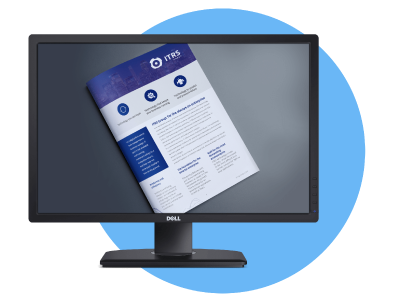What is Operational Resilience?
In a real-time economy, technology failure means business failure.
ITRS is recognized in the 2025 Gartner® Magic Quadrant™ for Observability Platforms
In a real-time economy, technology failure means business failure.

ITRS was born in real-time electronic financial markets, where speed and uptime are existential issues – Operational resilience is an emerging consideration at the core of those markets. In the introductory document below we explain why operational resilience is becoming more and more important, the potential costs and some approaches to conquering it.
Operational resilience is a term which first began circulating in it's most recent form, in 2012. For financial institutions it has been a reality since then, however it was a reality with little supporting information for the individual's at its mercy. In late 2018 the financial world, whilst also dealing with the realities of Brexit, were anticipating stress-testing for operational resilience to become another important priority. The regulatory tests did not emerge at that time, but the importance of operational resilience remained, and since then many financial firms have been setting long term strategy to accommodate the requirements associated with operational resilience. As the Bank of England and many of the 'Big Four' firms set the pace for meeting operational requirements, understanding the broad remit of OR and preparing on a technology and operations level is of critical importance.
Whilst financial resilience has been a priority since the banking crisis, now technology resilience (as an element of operational resilience) is beginning to reach the same levels of scrutiny from regulators. Governance will be a driving factor behind operational resilience strategy, however the benefits of a resilient architecture surpass meeting legal requirements. As discussion papers are closing and regulation spear-headed by the big four and Bank of England is beginning to take shape, many financial institutions are beginning by defining critical services and identifying the systems which support those services.
In order to support the systems which prop up critical business services, real-time monitoring is an absolute necessity. Assessing how systems are monitored and maintained in order to prevent failure, and the speed of response when alerts fire, will be a key component of the operational resilience strategy within a financial institution. With the increasing dependence on technology, failures pose a risk not only to the enterprises suffering the outage, but also to the economy at a larger level. Technology mitigates the increased risk, by empowering businesses to proactively manage extreme requirements and the most taxing scenarios. ITRS Group's product suite specialises in the monitoring and also modelling of situations like the ones described above, to mitigate risk and keep always-on enterprises running, always.
Whilst Operational resilience encompasses a broad range of business areas, beyond technology, the concepts of testing and change management are central to IT within Enterprise businesses laying out an Operational resilience strategy. Organisations must ensure the continuity of the services they provide by planning large scale change projects; like cloud migrations or days with heavy spikes of activity, like Brexit; meticulously and then testing mercilessly to avoid any doubt.
Planning and testing for large scale disruption or change is a key component of Operational resilience. Exchanges must be prepared for large scale trading in very focused periods of time, therefore using capacity planning to prepare for scenarios where they should burst into the cloud, is one example of an element of Operational resilience strategy.

Operational resilience is a set of techniques that allow people, processes and informational systems to adapt to changing patterns. It is the ability to alter operations in the face of changing business conditions.
ITRS Capacity Planner prevents outages and improves efficiency in both applications and infrastructure
The only really real-time monitoring solution. Keep your business running.
Ensure the best possible service for your customers with synthetic monitoring